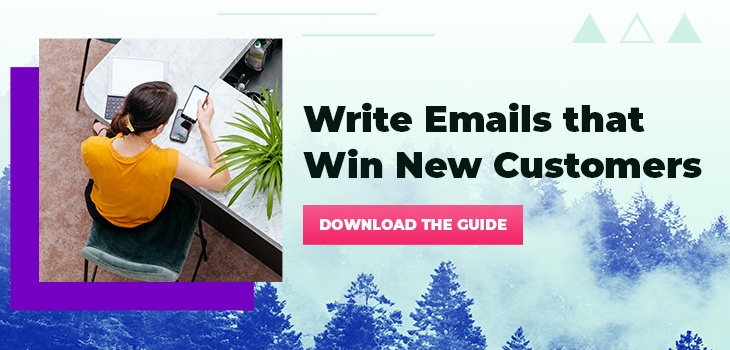"Content is King." - Every Content Blog on the Internet (also Bill Gates, 1996)
We hear it all the time, and though very true, this well-known catchphrase isn’t much help when it comes to actually putting together a digital content strategy. If you're a digital marketer, you (likely) know that great content is vital to the success of online marketing efforts and search engine optimization, but how do you make sure the content you produce will actually pay off? And how can you ensure your content distribution strategy is effective?
Of course, building a content marketing strategy that will truly impact your business means you'll need to produce high-quality pieces of content to increase organic traffic, speak to your target audience, boost brand awareness and convert potential customers into happy and loyal clients.
But producing quality content is just one step to success. You also need to know your prospect’s problems, understand when it’s best to publish certain material and make sure you don’t bore your audience or drive them away with irrelevant content. Pre-planning is vital, so doing a complete content audit can be a great first step on your path to a consummate content strategy. First, let's take a look at what that looks like, and then how we can achieve it.
What we'll cover:
- What is a Digital Content Strategy and Why Is It Important?
- Set Measurable and Subjective Goals
- Define Your Target Audience
- Use Visuals
- Focus on Engagement
- Vary Your Content
- Use a Content Calendar
- Your Roadmap to Content Contentment
What Is a Digital Content Strategy and Why Is It Important?
You make plans, templates, strategies and targets in other aspects of your business — your content should be no different. Content can take so many forms and cover so many topics; you need a digital content strategy to keep you focused on the highest impact areas.
A clear and decisive content strategy is a roadmap of how you move between various stages in your business journey. By following that roadmap, you’re much less likely to get off course along the way. Getting sidetracked and making uninformed or hurried decisions around your digital marketing content can end up being costly to your business and a waste of your time, so planning is crucial.
When building your content marketing strategy, there are a few critical guidelines strategists should have in mind and highlight in their editorial calendars. Let’s look at how you can use some of these tips to ensure your content is well thought out and remains effective for years to come.
Set Measurable and Subjective Goals
“There’s only one way to eat an elephant — one bite at a time." That’s a quote by Desmond Tutu, and he’s an Archbishop, so we’re happy to take it as gospel! But how is it relevant (or ‘relephant’) here? The easiest way to achieve what might seem like a huge task, i.e., perfecting your content marketing, is to break it down into bite-sized pieces.
A vague outline of your goals is not enough. What you need are measurable targets that you can focus on and accomplish, one at a time. Setting these benchmarks means that you can truly measure your achievements and see the correlation with the success of your business.
Setting content marketing KPIs, or Key Performance Indicators, helps consistently measure your content’s performance over a defined period. Depending on your company goals, these KPIs can vary. For example, at Lone Fir Creative, we dish out a fairly saucy newsletter every month — Marketing After Dark. Our goal is solely to provide as much education and value as we can to past, present and future clients. So, the KPIs for that monthly email are primarily focused on opens and clicks. We're less focused on conversions since that is not the primary intention of the newsletter.
With any campaign, though, there are key content marketing metrics you will want to be aware of and measure according to the content's purpose:
- Views
- Open Rate (mostly email-based)
- Click Rate or Click-Through Rate (also referred to as CTR)
- Submissions or Downloads (for downloadable content, e.g., PDFs, ebooks, white papers, etc.)
- Time-On-Page and Bounce Rate (for web-based content)
- Post Engagement (for social media)
Depending on the software you use, these metrics may look slightly different, but they are a strong starting point. If you are unfamiliar with content software, you can set up Google Analytics and pair it with tools like HubSpot, Moz, Ahrefs, SEMrush or similar to cover all of your bases. If you're not an expert in these, feel free to reach out to us; we have some true nerds that live for that stuff and would be happy to help you.
Define Your Target Audience
"The customer is not a moron. She's your wife." - David Ogilvy
Though these famous words are rooted in the context of 1955, they are as relevant today as ever. It can be said an infinite number of ways, but ultimately, we're saying it's critical to know your customers well.
This should be kept front-of-mind for all of your marketing efforts. An effective content strategy begins with understanding exactly what it is the audience wants or what problem they need a solution for. In fact, you should be doing any form of marketing until you understand what value you are to your prospective customer.
The way we precisely define the audience for clients is by reverse-engineering the product or service a brand offers and position accordingly. We asked our Director of Content, Frank Rocchio, to shed some light on that strategy.
By using the StoryBrand methodolgy, we focus first on who the brand believes is their ideal customer — honing in on their wants and the problems they face as it relates to the brand. Then we dig into the single biggest problem the client solves. By mirroring these two factors, you create a perfect 'problem-solution' orientation and allow your brand to become a helper in the narrative of the customer, not the main act.
(You can tap here to learn more about the StoryBrand Framework.)
When isolating a target audience, it used to be fairly normal to start with a “buyer persona.” A buyer persona is a fictional profile of your ideal customer, including their demographic (age, gender, location), interests and pain points.
While plenty of marketers still rely on buyer personas to define a target audience, we've seen increased clarity by using a brand messaging filter instead.
Instead of just having an idea of what your audience might look like or how old they are via a buyer persona, a brand messaging filter quickly and clearly defines the problem you solve for your customer, why they should trust you over anyone else, and shows them what their life will look like if they use your solution.
Additionally, it gives everyone in your organization simple language to powerfully describe your offering in a compelling and clear format.
Regardless of the method you or your marketing team uses, the philosophy is the same: the better you know your customer and speak to their needs, the more effectively you can use content to engage them, and the better the user experience will be.
Use Visuals
Walls of solid text are out. Customers these days simply don’t have the patience or attention span to deal with massive stacks of writing without a break. To avoid losing the user, make sure that your content plan focuses on creating easy-to-read text interspersed with infographics, images, charts and pull quotes.
Infographics, in particular, are a powerful way to convey dense data in a colorful, accessible format. They are also memorable without requiring too much patience from a viewer. Your readers can quickly glean a lot of information from a well designed infographic, and they can easily share that image to their social media, giving your content an extra boost in traffic. (If you're new to building this type of supporting visual, check out this guide to creating infographics.)
Images that encapsulate your message work in the same way, and are especially effective if they contain some humor. Breaking up the text every now and then with an image gives your content personality and 'likeability,' and gives the client a welcome break from monotonous text. This is also a great opportunity for some extra SEO, so remember your keyword research! Optimize your images for search by including your keyword as the image file name and in the alt tag.
The key here is to keep your reader entertained and engaged (we’re going to look at this in more detail in the next section). Whether you're producing white papers, case studies, blogs or email marketing content, keep it digestible by breaking up the information with engaging visuals.
Focus on Engagement
Getting your clients to really engage with your brand is the ultimate goal of all content marketing. It’s vital to remember, though, that engagement is a two-way street. Customers will not engage with you and your brand unless you also engage with them.
Unfortunately, the classic Field of Dreams adage “if you build it, they will come” doesn't quite apply to the world of e-commerce. Indeed, you need to first build “it,” i.e., your brand, storefront, offering, etc. Aforementioned, that should naturally be followed by getting to know your customers personally and learning everything you can about your target audience — who they are, how they behave and what it is that your product or service can do to help them. But eventually, you'll need to make the first move and engage with them. That's where content creation comes in.
So how do you engage effectively with your customers or potential customers? Here are a few essential methods used to build those genuine relationships:
- Share educational, relevant content. By giving your customer base plenty of free information in the form of videos, blogs on WordPress, ebooks, podcasts, webinar appearances, Linkedin posts and other similar channels, you can develop a more trusting, long-term relationship. Over time, this allows you to establish yourself as an expert in your field or industry. By way of association and 'nurturing (more on this below),' when viewers need a solution relevant to your offering, you'll come to mind. This content creation methodology also improves the customer experience and encourages your customers to share your posts with their social media networks, expanding your reach.
- Harness the power of social media marketing. Social media gives you the ideal platform to actively engage with your client base on a day-to-day basis. Post fun content that encourages people to like, share and tag their friends. When people comment, reply to them in a positive and friendly way. Just be careful of being salesy; it's not received well in an environment designed for organic connection, entertainment and conversation. Use the opportunity to have some genuine interaction, as this is a very powerful way to create authentic consumer engagement that doesn’t cost you anything but your time.
- Become more nurturing. A new customer purchases a product from your website. A prospect submits a question through a contact form. Someone downloads a PDF you created from your website. These are all invaluable opportunities to pave a path that leads right to your proverbial doorway. By delivering valuable content to these individuals daily, weekly, monthly, etc., you are offering them softer ways of becoming familiar with your brand without feeling pressured and 'nurturing' them into a sale. Do not, let's repeat that, DO NOT, waste these opportunities. You can see a step-by-step example of how this works in this downloadable email nurture series.
Vary Your Content
Variety is the spice of life, and the only way to avoid boring your audience with your content is to continuously stir things up. You may feel like you have a formula nailed down that checks all the boxes, but make sure that your content strategy allows plenty of space for innovation and change.
There are so many different types of content available to you, so why limit yourself to just one or two? Rather than just blogs and social media posts, think memes, videos, how-to-guides and interactive games. Be creative, and encourage your content creators to think outside the box. Be willing to try new things, even if they fail. A lot of the most successful and memorable content comes from unconventional thinking.
Use a Content Calendar
A content calendar is the pulse of your whole content marketing strategy. It's an invaluable resource achieve a reliable, consistent and profitable marketing plan. A content calendar ensures that all the content marketers in your organization are fully aware of the direction and timeline of your strategy.
A content calendar also allows you to plan for important events in the year and adapt your content to coincide with the accompanying changes in demand. The content that you put out in the summer, for example, should likely be very different from what you put out around Christmas. A clear timeline is indispensable when it comes to planning and knowing that you have the right content ready at the right time.
Your Roadmap to Content Contentment
With the right digital content strategy, you can consistently produce content that will make a true impact on your brand and revenue by boosting customer satisfaction, brand recognition and most importantly, sales.
If you have questions at any point in your content marketing journey, give us a shout. It's what we do, and we'd be honored to help.









